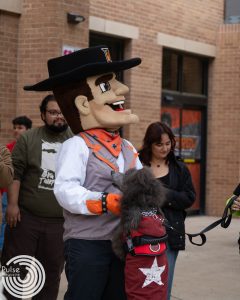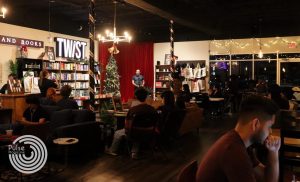A Day To Remember
Graphic by: Vanessa Vega
“Día de Muertos,” or Day of the Dead, is a holiday widely observed in Mexico and by Mexicans around the world.
According to the Mexican government’s official website, “Día de Muertos” is a timeless Mexican tradition that originated in precolonial times.
“The Day of the Dead is a celebration to one’s memory and a ritual that values remembering over forgetting,” the website states.
The Day of the Dead that is currently observed has its origins in the combined harmony of the religious rituals brought by Spain to the New World and the diverse native commemorations that have been realized for centuries long before colonization.
The celebration takes place Nov. 1 and 2 of every year. Nov. 1, All Saints’ Day, celebrates the life of those who passed away at an early age; in other words, people celebrate the life of all the children who had an early death. On the other hand, Nov. 2, All Souls’ Day, celebrates the life of all late-loved ones.
Mexican families place offerings and decorate altars with cempasuchil flowers, “calaveritas” and bread, among other things the late beloved one liked. This is done to help avoid their souls from getting lost and safely guide them from the afterworld temporarily back to Earth.
So, what is UTRGV doing to celebrate “Día de los Muertos?”
UTRGV observes “Día de los Muertos” by commemorating Hispanic and Mexican culture. Students have placed several altars across both campuses, such as in the University Library, Liberal Arts Building South on the Edinburg campus, and the Music, Science and Learning Center and Sabal Hall on the Brownsville campus.
Sigma Delta Pi, the National Collegiate Hispanic Honor Society, at UTRGV organizes yearly literary “calaveritas” and altars competitions.
Ana Peña-Oliva, UTRGV senior lecturer and co-adviser of Sigma Delta Pi, is from Guatemala. She said the holiday is celebrated back home; however, it is a bit different. She faced a cultural shock when she first saw the Mexican altars.
“I grew up with the Guatemalan tradition of always going to the cemetery, cleaning the graves, decorating them and eating special food we made,” Peña-Oliva said in Spanish. “I have lived in Brownsville for 40 years … so my customs have evolved and adapted more into Mexican culture.”
She said she encourages students to participate in Sigma Delta Pi’s competitions to celebrate Hispanic heritage and believes it is important for UTRGV and students, being 91% Hispanic and mostly Mexican, to celebrate “Día de los Muertos.”
The Dead Altar Contest will accept submissions until Friday while the Dead Calaveritas Contest will close Nov. 9. Details can be found on V Link.
George Díaz, director of the Center for Mexican American Studies, said CMAS is proud to sponsor LUCHA, La Unión Chicana de Hijxs de Aztlán, a student organization that focuses on celebrating Mexican culture in the Valley.
“It means remembering people who we miss, the people that we shared our lives with, the people that enrich us,” Díaz said. “This is a special day in which we honor our loved ones who came before us and who are no longer with us in this world. For me, it’s [about] family, it’s about love [and] it’s about happiness.”
There may be a misconception that the Day of the Dead is “Mexican Halloween.” However, this is far from the truth.
“All Souls’ Day is a religious holiday where people remember the people who departed before us,” said Samantha López, director of special programs for the PUENTES grant. “[Halloween] is more like a pagan holiday.”
She said Halloween, All Hallows’ Eve, is a spooky holiday about people contacting their loved ones. On the other hand, “Día de Muertos” is about people celebrating and remembering their loved ones, nothing spooky.
Taylor Seaver, UTRGV Mexican-American studies graduate student and leader of LUCHA, said the organization has observed “Día de Muertos” with its placing of the altar at the Edinburg campus library. She said the altar was in the making for the last two months; LUCHA worked on it piece by piece until it assembled it at the library Oct. 24.
“If you’re celebrating ‘Día de los Muertos,’ you’re not just celebrating loved ones who passed,” Seaver said. “You’re celebrating your history, your culture [and] your community.”
Seaver was born and raised in Weslaco. She said she did not pay much attention to the holiday growing up; however, this changed. Her mom, being Mexican, placed a big altar for her loved ones at home and at her job as a Spanish teacher.
“It’s a day of remembrance and celebrating our loved ones,” López said.





